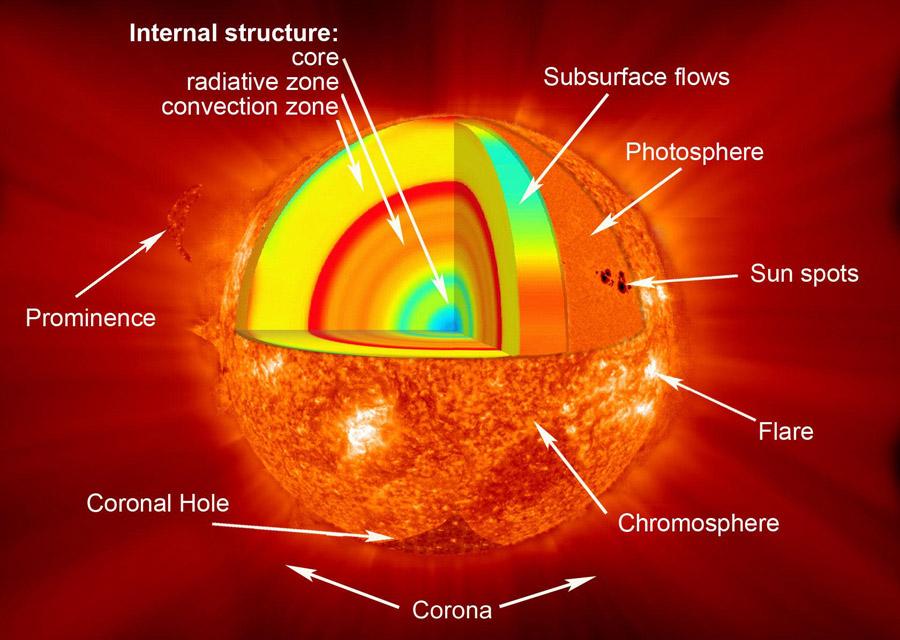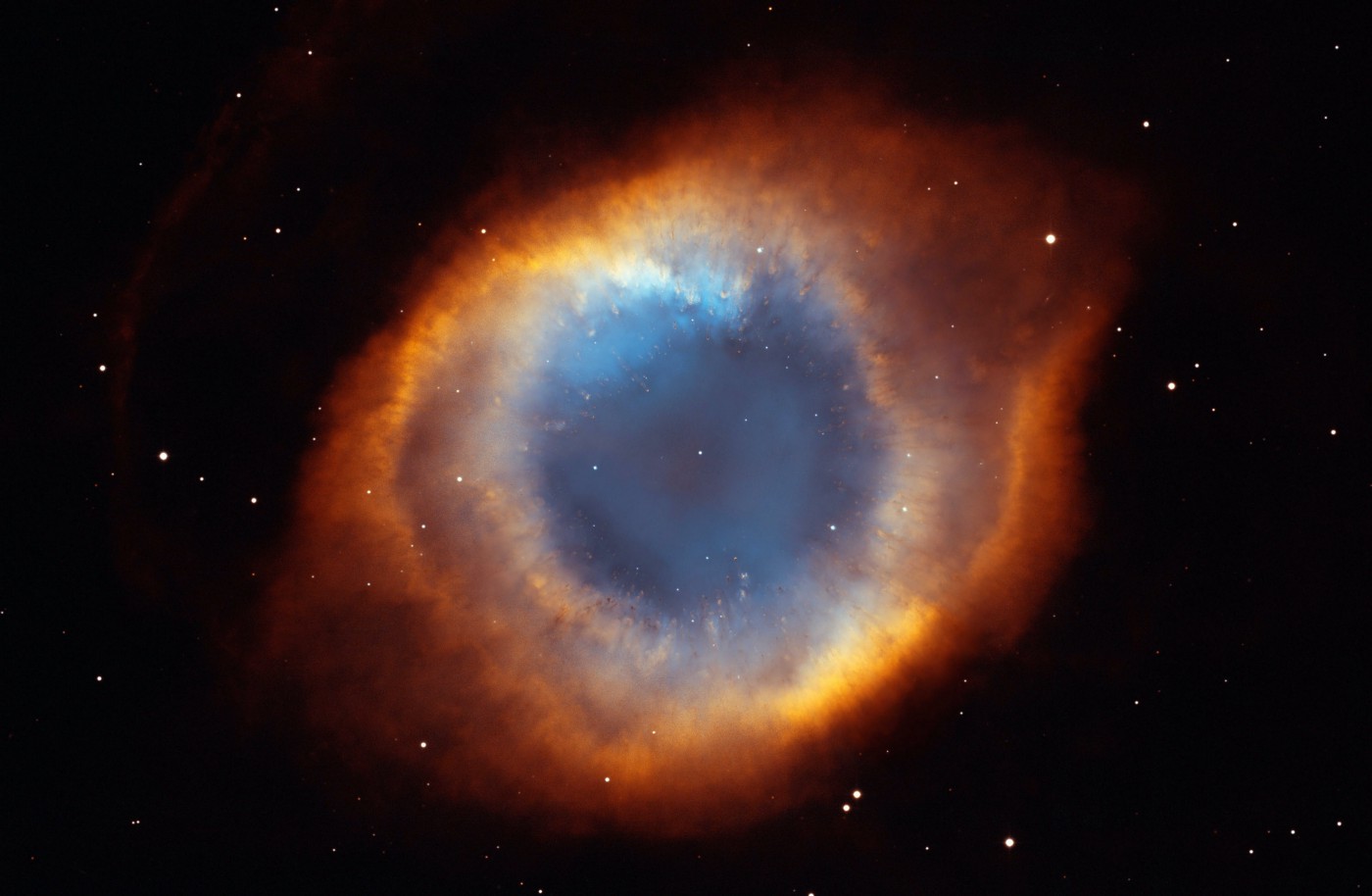Although there are billions of stars in the Milky Way that have their own systems of planets, moons, asteroids, and comets, the Sun is the most prominent star for us. Our Sun is a common middle-sized yellow star, though; it appears larger than the other stars because of its nearness to Earth.
The Sun lies at the heart of the Solar System; it is the largest object in the System, comprising about 99.86% of its total mass with almost 700 times the total mass of all the bodies in the Solar System. Being so large, its gravity, 28 times that of Earth, is strong enough to hold all of the planets and comets in orbit.
Happy Birthday Sun
According to scientists and astronomers, billions of years ago, there was just a huge cloud of dust and gas known as the solar nebula. As the nebula collapsed because of its gravity, it spun faster and flattened into a disk. Most of the material was pulled toward the center to form the Sun 4.6 billion years ago. With the Sun at the center, our Solar System formed; over millions of years, leftover gas and dust formed the planets, and a variety of moons, asteroids, comets, and meteors.
The Sun is a ball of plasma composed of about 70% hydrogen and helium, and less than 2% of heavier elements; including oxygen, carbon, neon, and iron, among others. The density of the material composing the Sun is about one fourth that of the Earth. At its center, the Sun has a density of over 100 times that of water, a temperature of 10 to 20 million degrees Celsius, and a pressure of over 1 billion atmospheres. The Sun orbits the center of the Milky Way at a distance of approximately 24,000-26,000 light years from the galactic center, completing one orbit once every 250 million years or so.
The Sun from the Inside Out
The solar interior is made up of the core, the radiative zone and the convective zone. The Sun’s core, the innermost layer of the Sun, which extends from the center to about a quarter of the way towards the surface, is made of plasma; a type of gas that is sensitive to magnetism. The core is like a giant furnace from which the Sun’s energy is derived. The Sun does not get its energy from burning fuels; instead, it comes from nuclear fusion, which releases extreme amounts of heat and energy in the form of gamma rays and neutrinos.
Surrounding the core is a huge spherical shell known as the radiation zone or radiative zone, which is located in the intermediate zone between the solar core at 20% of the Sun’s radius and the outer convection zone at 71% of the Sun’s radius. This zone gets its name from the fact that energy travels through it by electromagnetic radiation in the form of photons. These photons, which emerge from the core, are scattered in this zone; thus, a single photon may take a million years to pass through.
The convection zone reaches up to the Sun’s surface, making up 66% of its volume, but only a little more than 2%of its mass. This zone consists of “boiling” convection cells, which “boil” to the surface as they get heated by photons spreading outward from the radiative zone.

Solar Atmosphere
Only the Sun’s outer layers, collectively referred to as the solar atmosphere, can be observed directly. The solar atmosphere consists of three distinct regions: the photosphere, the cromosphere, and the corona.
There is not really a “surface” to the Sun; but rather a group of gases that gets denser as you move from space toward the solar core. The photosphere represents the depth at which we can see no deeper toward the core. It is a luminous opaque layer of gases that forms the visible surface of the Sun, lying between the dense interior gases and the more attenuated gases of the chromosphere. When we speak of the size of the Sun, we usually mean the size of the region surrounded by the photosphere.
The gases that extend away from the photosphere make up the chromosphere, which is about 2500 km thick. The density of these gases decreases as you move away from the photosphere into the chromosphere, but the temperature increases. From the bottom to the top of the chromosphere, the average temperature goes from 4227 to 9727 degrees Celsius. Needless to say, this rise was not anticipated by scientists when they first measured it; throughout the rest of the Sun, temperature decreases as you move further away from the core.
The chromosphere merges into the outermost region of the Sun's atmosphere, the corona, which extends for millions of miles into space above the photosphere. Usually, the corona cannot be seen because of the brightness of the photosphere; however, during a total solar eclipse, the corona shines beautifully against the dark sky. The corona has a density about 0.0000000001 times that of the Earth's atmosphere. It is very hot, millions of Celsius degrees; because of this high temperature, the bulk of radiation from the corona is emitted at ultraviolet and X-ray wavelengths.
Solar Features
Active regions of the Sun come in a number of varieties; such as sunspots, flares, and prominences. All active regions have large magnetic fields. The strength of the Sun's magnetic field is typically only about twice as strong as that of the Earth; however, it becomes highly concentrated in small areas, reaching up to 3,000 times stronger than usual. These kinks and twists in the magnetic field develop because the Sun spins more rapidly at the equator than at the higher latitudes and because the inner parts of the Sun rotate more quickly than the surface.
These distortions create features ranging from sunspots to spectacular eruptions, known as flares, and coronal mass ejections. Flares are the most violent eruptions in the Solar System, while coronal mass ejections are less violent but involve extraordinary amounts of matter—a single ejection can spout roughly 20 billion tons of matter into space.
Solar activity is thought to have played a large role in the formation and evolution of the Solar System. It has also affected the Earth, generating some solar phenomena; such as the auroras and rainbows.

Credit: SOHO (ESA & NASA)/Link
Sunspots
Sunspots are relatively cool areas on the Sun’s photosphere; they appear to be darker than the photosphere. The temperature of a sunspot is about 3927 degrees Celsius compared to a temperature of about 5227 degrees Celsius in the rest of the Sun. If we could see the spots in isolation, they would appear bright red.
A sunspot can have a lifetime ranging from a few hours to a few months. It consists of two parts: the dark inside region called the umbra, and the surrounding less dark region called the penumbra. Their sizes vary over a wide range, with a few having been measured to be 50,000 km in diameter.
Solar Flares
A solar flare is a sudden, rapid, and intense variation in brightness; it occurs when a magnetic energy that has built up in the solar atmosphere is suddenly released. Flares occur in active regions around sunspots, where intense magnetic fields penetrate the photosphere to link the corona to the solar interior. No one can view a solar flare by simply staring at the Sun; they are in fact difficult to see against the bright emission from the photosphere.
Solar flares affect all layers of the solar atmosphere; when the medium plasma is heated to tens of millions of Celsius degrees, electrons, protons and heavier ions are accelerated to near the speed of light. Solar flares produce radiation across the electromagnetic spectrum at all wavelengths, from radio waves to gamma rays; although most of the energy goes to frequencies outside the visual range, which is why the majority of the flares are not visible to the naked eye and must be observed with special instruments.
Solar Winds
Solar wind is a stream of charged particles ejected from the upper atmosphere of the Sun. It mostly consists of electrons and protons flowing outward from the Sun through the Solar System at a speed of 900 km/s and a temperature of one million degrees Celsius.
The solar wind is caused by the hot solar corona; the temperature of the corona is so high that the Sun’s gravity cannot hold on to it. The interplanetary magnetic field, the Sun’s magnetic field, is carried by the solar wind to the planets and beyond. The solar wind is responsible for deflecting the tails of passing comets away from the Sun.
Sunshine
Sunlight is the total frequency spectrum of electromagnetic radiation given off by the Sun. Sunlight consists of three types of waves: visible light, ultraviolet rays, and infrared rays, all having different ranges of wavelength. On Earth, sunlight is filtered through the Earth’s atmosphere, and solar radiation is obvious as daylight when the Sun is above the horizon. Sunlight takes about 8.3 minutes to reach Earth.
Visible light, commonly referred to as light, is electromagnetic radiation that is visible to the human eye; it is responsible for the sense of light. Our eyes perceive different wavelengths of light as the rainbow hues of colors; each color having a different wavelength. The visible light range is located between the invisible infrared and the invisible ultraviolet.
Much of the energy from the Sun arrives on Earth in the form of infrared radiation, which is electromagnetic radiation with longer wavelengths than those of visible light. Astronomers have found that infrared radiation is especially useful when trying to probe areas of our universe that are surrounded by clouds of gas and dust. Because of the infrared longer wavelength, it can pass right through these clouds and reveal details invisible by observing other types of radiation.
Ultraviolet light, on the other hand, is electromagnetic radiation with a wavelength shorter than that of visible light. Ultraviolet rays are divided into three regions: near ultraviolet, far ultraviolet, and extreme ultraviolet. The three regions are distinguished by how energetic the ultraviolet radiation is, and by the wavelength of the ultraviolet light, which is related to energy.
 Source: medium.com
Source: medium.com
The Sun’s Fate
In about 5 billion years, the Sun will enter a red giant phase; the hydrogen in its center will start to run out so its outer layers will expand and the core will contract and heat up. As the outer layers expand, the radius of the Sun will increase and it will become a red giant; an elderly star.
The radius of the red giant Sun will be 100 times what it is now, lying just beyond the Earth's orbit, so the Earth will plunge into the core of the red giant and become vaporized. When the helium fuel has exhausted, the core will expand and cool; the upper layers will expand and eject material. Finally, the core will cool into a white dwarf.
Eventually, the Sun will cool down into a nearly invisible black dwarf; the entire process will take a few billion years. So, for the next several billion years, humanity is safe, in terms of the Sun's existence, at least.
References
www.space.com
www.exploratorium.edu
www.infoplease.com
imagine.gsfc.nasa.gov
www.windows2universe.org
This article was first published in print in The PSC Newsletter, Summer 2013 (Come to Your Senses) issue.
Cover Image by kjpargeter on Freepik